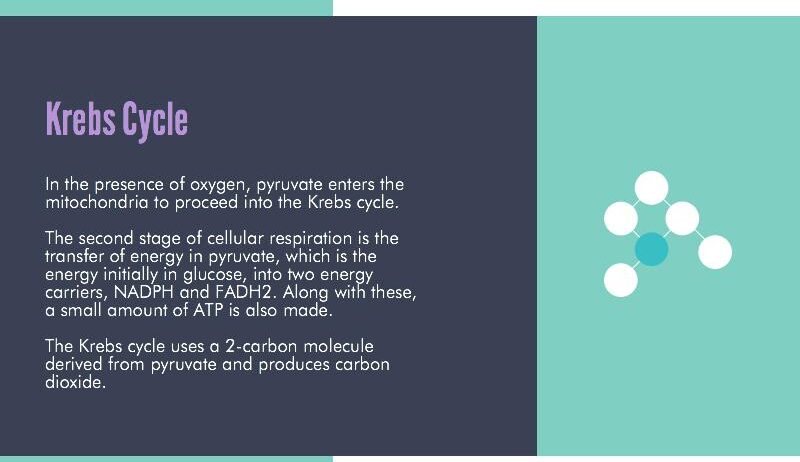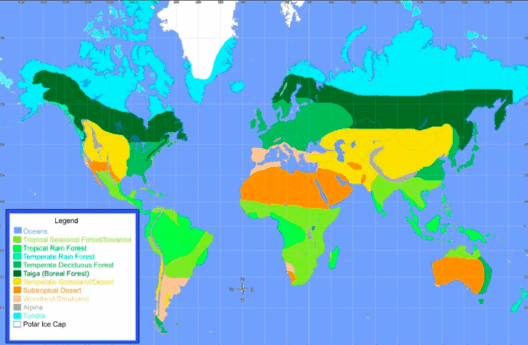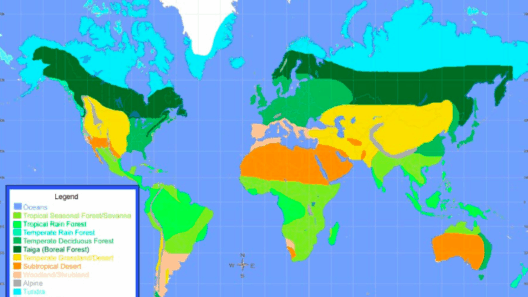The Climate Equation: How Photosynthesis and Respiration Affect Global Warming
When contemplating the intricate relationships within our ecosystem, one might ask: Can nature’s own processes mitigate the effects of climate change? This question sets the stage for an exploration of two critical biological processes—photosynthesis and cellular respiration—and their roles in the grand equation of global warming. Understanding these processes is essential for grasping the complex interplay between life on Earth and the atmosphere’s carbon dynamics.
Photosynthesis: The Powerhouse of Carbon Sequestration
Photosynthesis is the mechanism through which green plants, algae, and certain bacteria convert light energy into chemical energy. During this process, these organisms utilize carbon dioxide (CO₂) and water (H₂O) to produce glucose (C₆H₁₂O₆) and oxygen (O₂), releasing oxygen into the atmosphere as a byproduct. This reaction not only supports life on Earth, but it also serves as a key player in the global carbon cycle. By absorbing CO₂, photosynthesis acts as a natural form of carbon sequestration, storing carbon within plant biomass and soil.
The fundamental equation of photosynthesis can be summarized as:
6CO₂ + 6H₂O + light energy → C₆H₁₂O₆ + 6O₂
When we consider the sheer scale at which plants operate, the statistics are staggering. In a year, a mature tree can absorb approximately 48 pounds of CO₂, and forests collectively sequester enormous amounts of carbon, making them indispensable in our fight against climate change. Yet, as deforestation continues to ravage these vital ecosystems, the ability of the planet to sequester carbon diminishes, raising concerns about our atmospheric CO₂ levels.
Cellular Respiration: The Other Side of the Coin
Conversely, cellular respiration is the process by which organisms—both plants and animals—convert glucose and oxygen into energy, water, and CO₂. It is an essential metabolic process fueling growth, reproduction, and various biological functions. While it might appear counterproductive in the context of fighting climate change, it’s vital to recognize that respiration is simply one half of the carbon cycle’s ebb and flow.
The equation for cellular respiration is represented as:
C₆H₁₂O₆ + 6O₂ → 6CO₂ + 6H₂O + energy
In this cycle, the carbon liberated during respiration is reintroduced into the atmosphere as CO₂, reinforcing the interconnectedness of these biological processes. However, it is crucial to examine the balance between photosynthesis and respiration. When photosynthesis exceeds respiration, carbon is sequestered; when respiration dominates, atmospheric CO₂ levels rise, exacerbating global warming.
The Balance of Nature: Key to Climate Stability
In an intricately balanced ecosystem, healthy vegetation, thriving photosynthetic organisms, and thriving beehives work together to stabilize atmospheric CO₂ levels. However, with anthropogenic activities such as fossil fuel burning, land-use changes, and habitat degradation, we are skewing this balance. The excess release of greenhouse gases from human action compounds the natural cycles, leading to a net increase in atmospheric CO₂ concentrations.
The crux of the challenge lies in the massive scale of human-induced carbon emissions, driven primarily by industrialization, urbanization, and a relentless demand for energy. Efforts to ameliorate this situation include adopting renewable energy sources, promoting sustainable agricultural practices, and protecting natural carbon sinks, such as forests and wetlands. Each of these strategies aims to restore equilibrium to the carbon cycle.
The Role of Climate Activism and Policy Change
Climate activism plays a pivotal role in addressing the imbalances caused by human activities. Activists advocate for policy changes that prioritize environmental sustainability, promote afforestation, and support the development of clean energy technologies. One potential approach involves incentivizing carbon capture and storage (CCS) technologies that can harvest CO₂ directly from the atmosphere or flue gas emissions. By enhancing our natural carbon sinks while deploying innovative technological solutions, we can bridge the gap between photosynthesis and respiration in our efforts to combat climate change.
Additionally, education and awareness campaigns are crucial in galvanizing public support for environmental initiatives. When individuals become knowledgeable about the carbon cycle, the plight of the planet, and the significance of preserving biodiversity, they are more likely to become active participants in climate action.
The Path Forward: A Call to Action
As we stand at this critical juncture, the need for a united response has never been more pressing. Every one of us can contribute to this global effort. By reducing our carbon footprints, supporting sustainable practices, and actively engaging in climate advocacy, we have the power to influence policy and inspire change within our communities.
Will you play a role in reversing the tide of climate change? The journey may be daunting, but it starts with small, meaningful actions that cumulatively create significant impacts. Together, we can harness the power of photosynthesis, reaffirm the importance of respiration, and construct a healthier planet for generations to come.
Embracing our responsibility as stewards of the Earth, we can ensure that both the natural and human-made elements of our world coexist harmoniously, guiding us towards a sustainable and resilient future.








